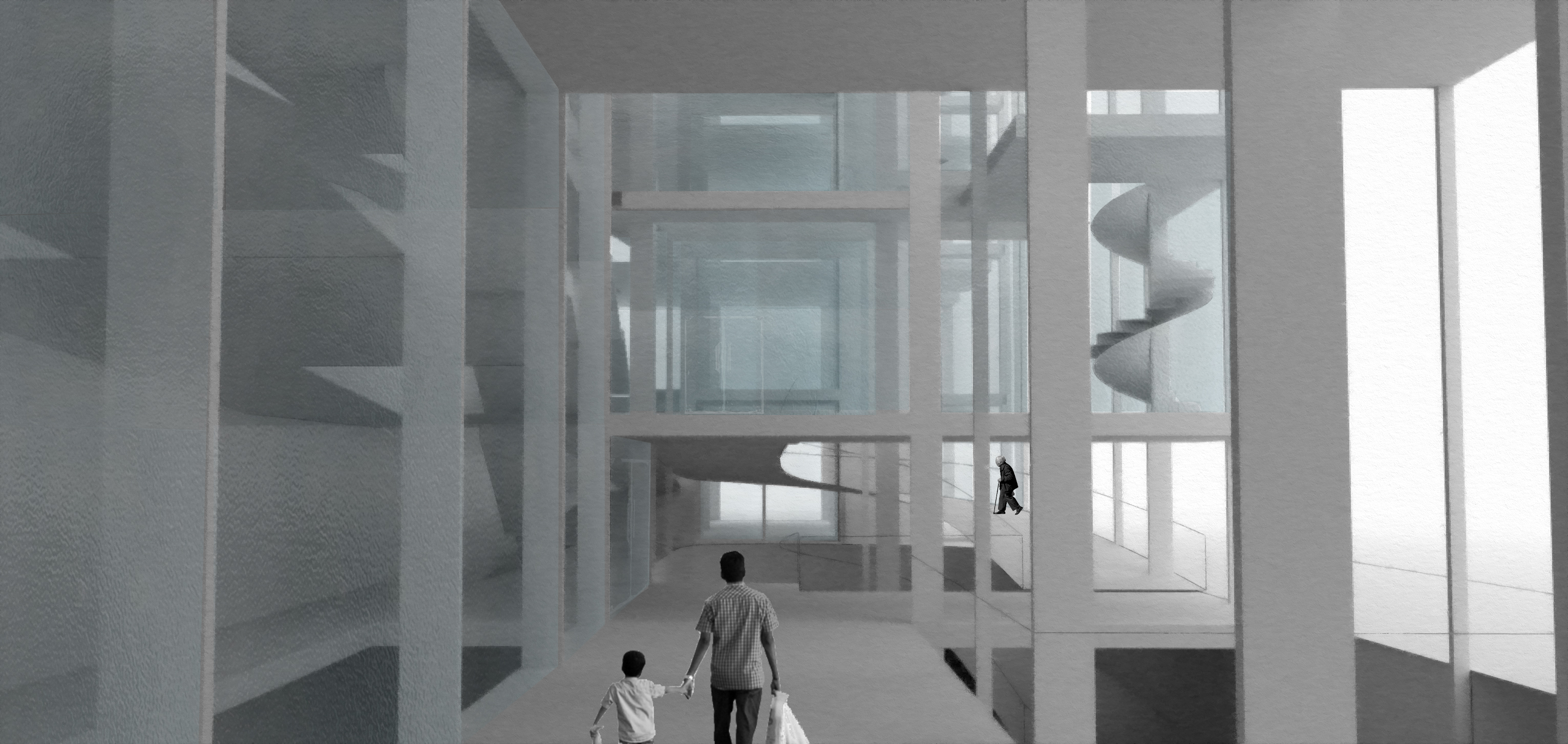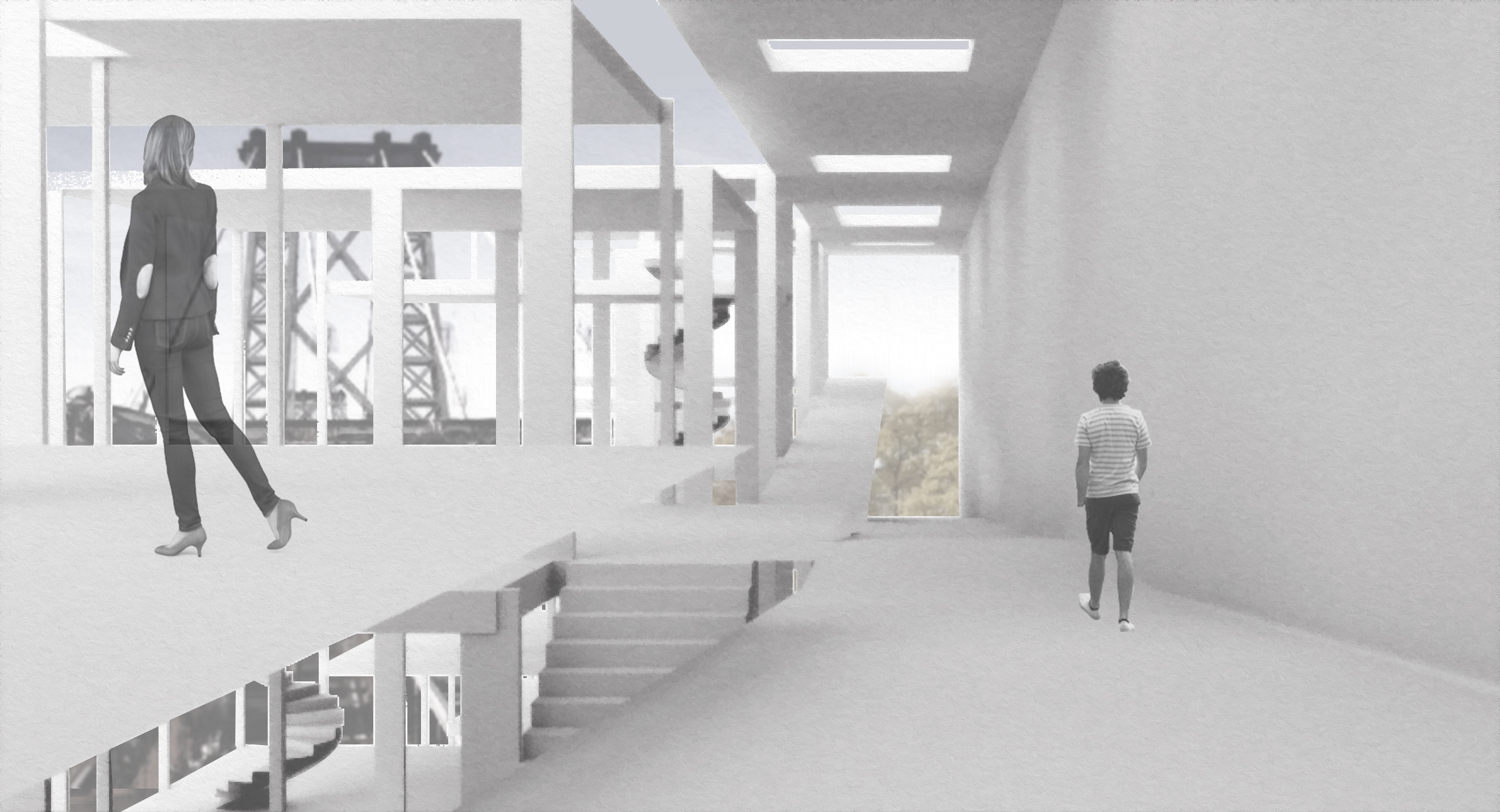


Third Space - Destabilized Concepts of Home
Fall 2019 |
Theory: 20th Century History of Ideas
| Professor Bill Sherman
Introduction
Third Spaces arise where pre existing categories of architecture no longer apply. Neither existing typologies nor hybrids, they are instead spatial and ontological alternatives. This emergent phenomenon results from increased connectivity and lifestyle standardization due to advances in social technology, increased freedom and frequency of movement across borders, and the increasingly global nature of all phenomena, especially large scale conflicts and climatic conditions.
The third culture is a place wherein individual interpretations of disparate societal organizations, modes of living, and political/economic factors hybridize in (a) a loose or dense interconnected network or (b) a physical locality. Third Spaces are often both.
I specify individual interpretations because the third condition is necessarily an individual pursuit; third culture individuals acclimatize to a world not built for them, form a new world of their own as self-generated exoskeleton, and participate in the overlapping societal space between convention and innovation that they create for themselves. It follows that collective culture derives from the act of empathy: individuals existing in the Third Condition draw from the meaningful bond that an inability to identify with pre-existing categories can create, generating shared typologies of experience rather than specific shared practices.
Preexising, normative notions of “home” don’t apply in the Third Condition, and both individuals and society must reckon with the sociological ramifications of this misalignment. Third Spaces don’t have nationalities or political protection. Constrained to micro communities, confined to small spaces bent around dominant spatial typologies that make up the architectural landscape, the Third Condition is overlooked and, therefore, ripe with potential to reframe existing spatial paradigms within a larger realm of possibility.

Origins of the Third Condition
The first canonical studies of the third condition centered on so-called “Third Culture Kids,” conventionally defined as an individual having a misalignment of three notions of home: (a) formative cultural environment + (b) place of origin of parents + (c) place of birth do not match. More broadly, a third culture individual has a nonconformistic relationship with home, meaning that they exist within the Third Condition, which has dimensions of time (the measure of one’s lived experience) and space (the environment an individual assembles when dominant spatializations fail). There is "gray space" outside the rigidly bounded definition of a “third culture kid” that has utility and must be weighed equally in the forming of a comprehension of what Thirdness means.
To illustrate an example of such "gray" factors, take someone who was born in Mexico to Mexican parents, emigrated to America as an undocumented individual and lived there from the age of 2 to their present age of 16, and has indeterminate legal status in the United States, or perhaps their parents were victims of deportation and they grew up without them, raised instead in a white american community divorced from the culture of their parents. Some combination of the aforementioned factors, were they to apply in conjunction, would make such a person "Third."
Juan Escalante, an individual with DACA status, is a real life example of someone inhabiting the Third Condition in a less than conventional way. With much foresight to the oncoming political violence, Escalante’s parents fled Venezuela in 2000, with his two brothers in tow, for the United States. In 2006, Juan learned that an immigration attorney had mishandled his family’s immigration case, which meant that, after six years of legal fees and paying taxes, they were no longer on the path towards U.S. Citizenship. By the time President Obama announced the Deferred Action for Childhood Arrivals (DACA) program in 2012, he had graduated from Florida State University with a political science degree. He helped enact a law in Florida to provide in-state tuition for undocumented students across the state. Since 2013, DACA has protected him and his brothers and from deportation. Since graduating from FSU with a Masters of Public Administration, he has lived in Tallahassee working in immigrant advocacy. Due to his indeterminate legal status, Escalante inhabits a Third Space.
Extrapolating the concept of Thirdness to architecture, I reiterate my main research focus as a question: what does a Third Space look like, and how can we use Third Spaces to test and redefine the bounds of what constitutes architecture? What spaces can/should architecture create to serve Third users? How can we apply an understanding of Thirdness to spaces and typologies that defy conventional categorization? The following case studies will further interrogate these lines of inquiry.
Case Study 1: There is No City
Edward Soja proposes an analogous concept to a third condition founded in hybridity rather than independent innovation, identifying a number of conceptual “cities” which stand in for societal trajectories. These “cities,” the Flexicity, the Cosmopolis, the Exopolis, the Metropolarities, the Carcereal Archipelago, and the SimCity, are useful tools to explain the city in relation to trends of settlement and the politicizing of land in the context of Israel-Palestine.
As Jamal Zahalka, an MK for Israel’s Balad party, writes in his article "In the Absence of a City," Arabs in Israel live a life of “double marginality, on the fringes of both the Arab world and Israeli society. He writes, "We must not allow ourselves to be enticed into a cultural niche.” What he is warning against is Edward Soja’s Cosmopolis: the primacy of globalization. This includes the globalization of culture, labor and capital, positioning the city within a densely connected global framework and reducing immediate context to a mere periphery of a node. In short, he believes that multiculturalism, as a globalist project, robs indigenous people of their cultural specificity and right of self governance independent of colonial empires.
In the absence of a central metropolitan area to nourish Palestinian group identity, Palestinians live in a condition describable as Soja’s Exopolis: the city that no longer conveys the traditional qualities of cityness. The proposed growth of the outer city and city edges can be extrapolated to describe Palestinian border settlements, and also conversely Israeli colonies in the West Bank. It encompasses a diffusion of urban life into the un-urban world. The successful city transcends physical context and continues to incubate culture even as a distributed entity; the unsuccessful transmutation of the city means the disappearance of a launching point for the making and dissemination of collective culture.
In the Metropolarities, increasing social inequalities, widening income gaps, new kinds of social polarization and satisfaction that fit uncomfortably within traditional dualisms based on class or race set in. The homogenization of Israeli cities— as in the exclusion of Palestinians— creates an implied condition of Metropolarities. The Polis sits at its privileged center, a node nourished by arterial links to a national network plugging into the global system at large. This is at the expense of the Exopolis, which increasingly takes the form of the village or the camp.
Zahalka expresses the need for Palestinians to move out of Metropolarities and Exopolis into a new, constructive Third condition: “We need somewhere to be. We need a city, and there is no city.” Bashir calls for a critical architectural approach that will help "renew our bond with the land in a more aesthetic way, after it has been distorted and in many cases, torn to shreds."
Case Study 2: Positive Inter-National Space
The refugee camp is a space often conceptualized as in between national borders, a mere temporary consequence of a migration. Camps are thought of as an “artifact of an event, an architecture of decay,” where “the basic infrastructures of sustenance such as dwelling, food, health, and emergency issues are the basic forces of zoning” (Tan 212). In addition to the fact that people can and often do inhabit refugee camps for durations of time comparable to life lived in a city, this attitude of refugee camp as non-place enables society to undervalue and underinvest in these collective spaces for healing and patience, as people await their next destination.
Pelin Tan’s “Transversal Materialism: On Method, Artifact, and Exception” proposes what she calls the transversal method of approaching architecture, which “opens up more heterogeneous understandings than the prevailing… neoliberal sense that architectural form is an assemblage of the economic processes of production and representation.” She identifies a number of thinkers for whom the refugee camp constitutes a legitimate urban typology worthy of and necessitating further study.
For example, anthropologist Michel Agier asserts that the refugee camp constitutes an urban typology in its own right, rather than a mere byproduct of global conflict. In his view, its transient nature does not make it any less a City in the architectural and social sense, nor does its paucity of means. Architect Manuel Herz extends this idea by proposing that the refugee camp can present alternatives to Western colonial planning practices, wherein carceral buildings and landscapes follow from the spatial theory of Panopticon. As a space of resistance, based on and revolutionizing “political, economical, and judicial relationships” between individuals through adjacency and larger systematic bodies by virtue of their governance, refugee camps can also “transform the relations of the world outside.”
To concretize the refugee experience in space, I present the story of Sabri, who fled his home in Aleppo, Syria. Currently 16 years old, he is living in a refugee camp with his family Paiania, Greece. Sabri implemented a photography project to help Syrian children address psychological problems. His experience across the space of national borders, across time spent waiting to enter Germany, where he and his family have been granted asylum, and across mediums through the sharing and artistic manifestation of his story, is a life lived in the Third Condition.
Conclusory Remarks: Acts of Empathy to generate new Urban Forms
Building for all begins with naming and validating the existence of the Third Condition.
Between preexisting nation-state categories of identity and space, a tapestry of rich individual narratives need and deserve to be designed for and celebrated.
It also means recognizing the momentum behind conditions of thirdness in our accelerating technologized culture.
Old paradigms will no longer suffice, and the new paradigms will be constructed by sharing experiences of friction between the inner and outer world of the individual, and responding with acts of empathy.
